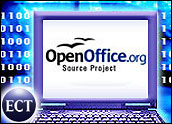
Bob Weiss knows a thing or two about dreams.
“I grew up with the promise that if one wanted to go to space, they would get the chance,” said Weiss, president of the X Prize Foundation. The trouble was that nobody kept the promise.
“It became obvious that the only people that were going to space were government-trained employees called ‘astronauts.’ Other folks were not getting to go,” Weiss said.
Four years ago, the childhood vision started popping up again for Weiss. He knew there had to be a way to make it real. Finally, he found it.
Building on the Past
Today, Weiss and the foundation are pioneering a competition-driven style of innovation, helping turn little-known inventors into global phenomena. But the key to his own dream actually started with someone else’s, years before he was born.
In 1919, a hotel owner offered a US$25,000 prize for the first person to fly nonstop between Paris and New York City. Seven years later, a young mail pilot named Charles Lindbergh pulled it off — transforming air travel forever.
“The least likely guy was the one who won it — this part-time barnstorming airmail pilot,” Weiss pointed out. “It stimulated a whole paradigm change.”
Fast forward to 2004. A book about Lindbergh’s experience found its way to Weiss and his colleagues. The tale gave them the inspiration for the first X Prize and the foundation that would follow.
“‘X’ was for the unknown, for experimental, for 10 — $10 million,” Weiss explained. “The prize would be analogous to the prize that stimulated the aviation industry. This prize, though, would stimulate the personal space industry,” he told TechNewsWorld.
And stimulate it did. The Ansari X Prize led to the development of SpaceShipOne and its second generation, SpaceShipTwo, now nearing completion as potentially the world’s first venue for public space tourism.
Weiss’s dream is closer than ever to becoming reality. He’s not the only one reaching for the stars, though. The idea of open competitions for innovation is rapidly gaining momentum, giving a whole new generation a shot at changing the world.
A Beautiful Mind
John Davis is part of that generation. He’s an accomplished chemist, but you wouldn’t know it to talk to him. Davis doesn’t talk much.
He doesn’t have to. At 38, Davis has more than proven himself as one of America’s brightest minds. He’s credited with figuring out a mystery that boggled scientists for nearly two decades.
The puzzle dates back to 1989, when the tanker Exxon Valdez hit a reef and dumped nearly 11 million gallons of oil into Alaska’s Prince William Sound. It’s still considered one of the worst human-caused environmental disasters of all time. Tens of thousands of animals died.
Teams are still struggling to clean up remnants of the spill. The problem? The oil is frozen in the water, so the standard solution of pumping it out just won’t work. After years of experimentation, the group charged with finding a solution — the Oil Spill Recovery Institute, or OSRI — turned to a company called


















































